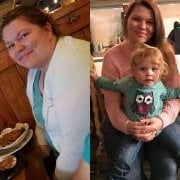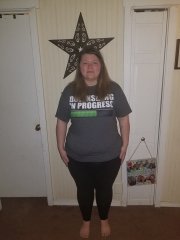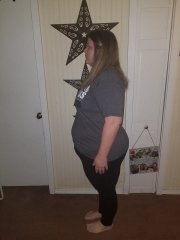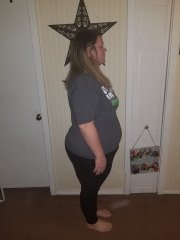Search the Community
Showing results for '공주출장업소《카톡: po03》{goos20.c0m}출장최고시외국인출장만남Y╅┺2019-01-19-10-35공주╩AIJ↸출장업계위콜걸출장마사지콜걸강추✍외국인출장만남➴릉콜걸샵☪공주'.
Found 17,501 results
-


Any Canadians here? Dr elias ortiz patients?
KingOfKings187 posted a topic in PRE-Operation Weight Loss Surgery Q&A
Going for a vsg revision to rny bypass I'm a 30 year old man. was in the greatest shape of my life after vsg. After getting diagnosed with a debilitating back injury i had to give up alot of what i used to do such as body building and 4 Wheeling Ect. So I've put on about 50 pounds in the last couple years since hurting my back. Going to Mexico for gastric bypass revision on February 12th 2019 with ALM. Anyone had any bad expierences with them? Sent from my SM-N960W using BariatricPal mobile app -
I underwent VSG on 1/24/19. I also had a large hiatal hernia repaired at the same time. I have been feeling much better in the last week or so, especially during the day. Other than being somewhat fatigued, I feel fine while I’m up and around. For the last 2-3 nights, though, I toss and turn with constant middle-back and side pain. It’s not a burning/stinging pain or anything. It’s more of a really strong ache. Reminds me of a “flu backache” for anyone familiar with that. It doesn’t matter which position I lie in, it’s constant. Has anyone else experienced this? What in the world is causing it? I have no other adverse symptoms at this point.
-


February 2019 weight loss buds
SleevednowAK replied to TheMarine79's topic in Gastric Bypass Surgery Forums
Hang in there. It’s natural to worry but the statistics support the benefit of following through. I know of at least 10 family, friends and colleagues that have had bariatric surgery. All of them experienced anxiety but none of them have regret. They all wished they would have done it sooner....Heck so do I. My close friend and I started this health journey together but I began 2 months ahead of her. Only the dr’s team, she and my husband know I am getting a sleeve. She was sleeved on 12/20 (her insurance only required 3 months while mine required 6) while I am scheduled for 2/18 and I begin my two week pre-op diet tomorrow. Funny, I had to encourage her to stay the course as she got major cold feet the week before but now, she’s my advisor and support to push through. -
I had my surgery on 12/10 and some days I can eat every 2 hours and some days it's hard to even have one normal meal. I found it best just to get in a routine. For me, I wake up and go for a mile and a half walk. Then an hour or two later i'll try to have a meal (1.5 ounces or less still for me). I just try to eat 3 meals a day, mostly chicken or for a snack i'll have some cheese. So far it's worked well for me I'm down over 70 pounds.
-


Anyone gone to Blossom Bariatric (self-pay) in Las Vegas?
tdboutwell replied to kmn1109's topic in Weight Loss Surgeons & Hospitals
I underwent VSG at Blossom Bariatrics/Warm Springs Surgical Center on 1/24/19. My surgeon was Dr. Matt Apel. I have nothing but positive things to say. Their staff members were amazing, but more importantly, they were completely thorough in everything they did- from the pre-op work-up, to surgery, to the IV infusion the day after surgery. They even emailed me copies of the surgical report and pathology reports. Everything was spectacular. The hotel they put us in was nice, clean, and quiet. The presidential ground transportation they provided was also very convenient for out of towners like myself. I’m a registered nurse with a background in pre-op/post-op, so I tend to pay attention to things that most people don’t notice. I found absolutely nothing to critique. Every T was crossed, and every I was dotted. I honestly can’t think of a single thing to complain about. If your insurance won’t pay to have bariatric surgery done locally (and even if it does), then I 110% whole-heartedly recommend Blossom Bariatrics. -
That all sounds pleasant. I hope my hunger will decrease that's my main issue never get full. Not only will I save tons of money on food bill but I'll definitely lose weight better but the fact we have to take vitamins because of the malabsorption means we absorb less calories and nutrients that's my main reason for the RYGB over the sleeve.. 73kgs in 12 months is a great number that's about 6kg a month on average... But obviously each month would be varied.. It will be so amazing to be able to eat so small portions and that way can afford better quality foods! I've heard some ppl living off protein shakes for 2 out of 3 meals so they consume less calories but better nutrition.. I can't wait but I've got months to go to save and find the right doctor. I'll be 35 this year so it's like my birthday present to myself to get the bypass. It's long overdue I wish I knew about it 10 years ago!!
-


Getting cold feet, normal?
CyclicalLoser replied to Briswife15's topic in Gastric Bypass Surgery Forums
I think it is very normal. At some point, you have to relinquish control (or lack thereof) and let the Good Lord (Or surgeon, if you will) take the wheel for you. Yeah, it's scary - and there are tons of opinions out there. I was asking lots of questions before I pulled the trigger. Motivation? Watch "My 600# life". That worked for me. Can I eat the yummy foods I used to? Maybe. Have I tried? Nope. Why? Well, I won't be the first to say this, but my body literally doesn't crave them (* most of the time). I've lost 100# in 7 months, lost 10 inches off my waist, I can walk up steps to my office, and I can work on my car without feeling like I'm going to have a heart attack. Also, I can fit in amusement park rides now, something I couldn't do before. -


January surgeries?!
tdboutwell replied to jessicaalyssa's topic in PRE-Operation Weight Loss Surgery Q&A
I had my gastric sleeve done at Blossom Bariatrics/Warm Springs Surgical Center in Las Vegas, NV on 1/24/19. Starting to feel much better. I’m excited to lose this weight for the final time and never look back. -


Has surgery 10 days ago, I was so excited Now Iam so depressed
slummus241 replied to Temeka Silva-Perez's topic in Gastric Sleeve Surgery Forums
I was sleeved on 1/24/19 and my emotions are all over the place. I was crying stirring my cream of wheat for no reason. I’m chalking it up to my body had a big adjustment and everything needs to realign. I end up feeling better after 15-20 mins. -


Will I ever feel normal again?
slummus241 replied to mayglow2007's topic in POST-Operation Weight Loss Surgery Q&A
I’m 10 day’s out from sleeve surgery...I think I know what you mean by the “ball”...I seem to have that too...when I get it I take even smaller sips and wait between each one...it’s tedious but it helps. -

Weight Loss Journal (May 2018, Sleeve)
MeanSleevedMachine posted a topic in Gastric Sleeve Surgery Forums
I have now officially lost over 200 lbs in 8 months. Quite the journey. My wife was so impressed with the results she decided to have the surgery in October and is now my workout buddy. We walk 7-10 miles a day and lift weights five days a week. I consider myself about 20-30 lbs away from goal at this point. I understand there is probably more weight to lose than that if I reallt wanted to but I don’t really ever want to be super skinny. I have two little daughters so I prefer the “big enough to kick your butt and small enough to catch you” look for for any future boyfriends. :) -

Pre-Surgery 02/01/2019
Queenbee34 added images to a gallery album in Before and After Gastric Sleeve Photos
-


17 yrs post op any others out there?
mskami77 replied to Believe2002's topic in Gastric Bypass Surgery Forums
I'm only 5 years post of but wanted to say thank you for sharing. It's very inspiring to see someone so far out doing extremely well. I hope to be as successful in 10 years. HW 314 SW 296 GW 177 CW 169 -

Neck/facelift, Anyone?
Screwballski replied to Screwballski's topic in Plastic & Reconstructive Surgery
I don’t know why I can’t see my answer to your question about cost but I’ll answer again. With the lower blepharoplasty the total was somewhere between $17k. My memory is fuzzy. I seem to recall I could have gotten away with $15k for just neck/face lift or paid $19 for lift with upper and lower blepharoplasty. -


After surgery, ever eat food you shouldn’t?
brookie replied to Bluebird_'s topic in Gastric Sleeve Surgery Forums
so it has been 10 months since my surgery & i started out 254lbs & now weigh 170lbs & wear a size 10.i have had treat days all along & have lost weight all along.i work out 5 days a wk anywhere from a half hour to an hour and 15 mins on avg. i do cardio on one day & strength training on the next.i go out to eat about 2-6 times a month,i order whatever i want but can only eat a small amount.the rest of the time i eat pretty healthy & avg about 1,000 calories a day.i have personally learned to balance out my treat days & did not gain during the holidays despite all the baking & parties.im sure after the one yr mark i will have to always adjust my calories & workouts as it will get harder to maintain.i will never b hardcore & not allow myself treat days,for me its about living & balancing everything out & choosing a lifestyle that works for me & for longterm.everyone has to find what works for them.its great to read everyones experiences & advice & take pieces away that work for u & devise ur own plan. -
I was sleeved 10/17/18. Totally trouble free. I was a 36 year old with 125 to lose. A few months later and now I'm a 37 year old with 62 pounds left to lose.
-
I think a lot of the time the stats include pre-op weight loss as well as post-op, so the “100 pounds in under a year” could really be 25 lbs before surgery, and then 75 lbs over the first 10-12 months post-op. My starting weight was 282.4, but I was 269.5 on surgery day because of my brief, two week pre-op diet. A lot of people have much more extensive pre-op diets and have to lose significant weight ahead of surgery. I am now 6 months out from surgery and just over 75lbs down overall. Weight loss has slowed significantly so I’m not really sure whether I’ll hit 100 by my anniversary counting from my highest weight, and I definitely don’t think I’m going to get to 169 by then. Just an added ingredient to think about! I also did RNY, not sure which surgery you’re doing!
-
Consider joining our challenge https://www.bariatricpal.com/applications/tapatalk/index.php?/topic/422620-[emoji173]-FEBRUARY-2019-CHALLENGE-[emoji173] [emoji173] FEBRUARY 2019 CHALLENGE [emoji173] [emoji738]
-
Check February 2019 weight loss buds! Great group.
-
I had my gastric sleeve on 24/01/19. I'm still on liquids. Can't start puree foods until week 3. I wouldn't be able to consume that much without some sort of pain. Perhaps you should try fluids only again. Hope you feel better soon.
-
I’m 10 days out and my left side is still excruciatingly painful. Is this normal? Also, I had my second protein shake about 4:30 and then supper around 7:00. Now, my left side is unbearable!! Is there a chance I overfilled my pouch to close together? I’m miserable! I’m supposed to do my third protein shake later this evening. I can’t bear it! Should I just call it quits for tonight and start a new day tomorrow? Actually, my whole day’s schedule got off because I slept in this morning.
-


Gastric Bypass Surgery in Mexico at Mexico Bariatric Center???
ReginaD1962 replied to Paula J B's topic in PRE-Operation Weight Loss Surgery Q&A
I had mini gastric bypass(which is better and safer than R n Y) with DR LIZA POMPA@ LIMARP in Tijuana. I am a nurse and did much homework to finally choose her! And it was an awesome experience! I had my surgery December 19 weighing in at 258 pounds and today I weighed 216 and half and had no complications from my surgery at all. It cost me $8000 and it’s the best money I ever spent. She is the surgeon of an INTERNATIONAL CENTER of EXCELLENCE in BARIATRIC SURGERY in Tijuana. https://www.limarp.com/en -


Has surgery 10 days ago, I was so excited Now Iam so depressed
kygirl68 replied to Temeka Silva-Perez's topic in Gastric Sleeve Surgery Forums
You are not alone! I had surgery Jan 9th and went through the same thing! It will pass. The first 2 weeks were rough just being on liquids and feeling so bloated, like I was 10 months pregnant, the gas pains , "growling" (gurgling) stomach, the second guessing my decision and fear of failure...yep...pretty common! Keep coming to this forum and read others testimonies so you know you are not alone! -


February 2019 weight loss buds
Gottajustdoit replied to TheMarine79's topic in Gastric Bypass Surgery Forums
Welcome to the FEB 2019 group Everythinganna! I'm have gastric bypass, without the option for the sleeve because I have gastroperesis and acid reflux. I've been told that the gastric bypass helps reduce the reflux whereas if I got that sleeve, my reflux would only get worse. I'm not sure if that is "commonly known" or even false, but that is what my surgeon told me when I was hoping for the sleeve. If you have reflux, maybe you could ask your surgeon given you're on the fence. Hope all goes well! -
I have a strong opinion on this. I started taking Phentermine in 1996 or so. My doctor prescribed 37.5 pills two times a day, one at 8am and one at 3pm. I was about 40 pounds overweight. I was basically high all the time. It made me want to drink alcohol to level me out. He’d refill my script when I weighed as little as 115 pounds ( I am 5 foot tall so I was hardly overweight at 115). Back in the 90’s-early 2000s I Could get it on the Internet easily so as they lost effectiveness I would buy it and take it from online vendors. An a point was taking four+ 37.5 mg a day. Besides the fact that I felt like I was basically on crack, a couple of other things. They give you dry mouth and bad breath. For me the dry mouth led to gum recession. They also cause me back pain, heart palpitations, etc. Phentermine makes me high and then irritable and then completely made me want to isolate myself from other people. But for me, being “hot” was always worth these risks. I was taking pills and counting calories at 97 pounds! Around 2002, my now ex-husband got into them and took like 6 in one 24 hour period and had to be admitted to the ICU for 3 days. His pulse was racing at 200 for almost 2 straight days. These days I don’t think any doctor their merit would write a prescription for two of those a day. It set me up for 20 years of weight loss and gain. I just stopped taking them in 2016. I literally took them off and on all those years. Not to that extreme of course. I put on about 30-40 pounds and for the last 10 years would take 1/2 to 1a day them to maintain that weight. Anyway, That’s what led me to the surgery decision and ultimately to this forum. I will never live that way again. That’s an extreme example (and an example of drug abuse/misuse) but that’s my truth. It’s a quick fix for a lot of people myself included. I’m sure there are some people that take them successfully but I was not one of those people. Hope I didn’t scare you; just wanted to share my story.












